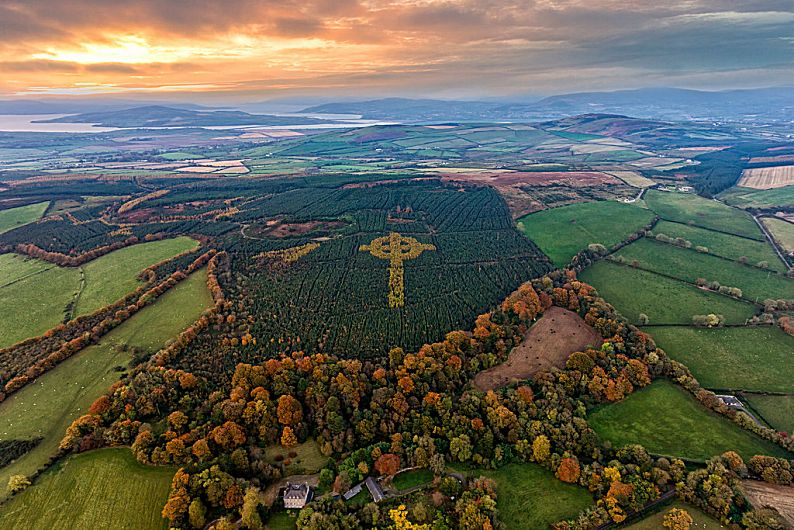
Celtic Languages, subfamily of the Indo-European family of languages, a short description of their origin, of their classifications, diffusions and culture.
A society that has no respect, no regard for its bards, its historians, its storytellers, is a society in steep decline, a society that has lost its very soul and may never find its way.
Laurence Overmire
The Celt, and his cromlechs, and his pillar-stones, these will not change much – indeed, it is doubtful if anybody at all changes at any time.
William Butler Yeats
My father was a creature of the archaic world, really. He would have been entirely at home in a Gaelic hill-fort. His side of the family, and the houses I associate with his side of the family, belonged to a traditional rural Ireland.
Seamus Heaney
Broken Irish is better than clever English.
Irish saying
The Celtic belief that the souls of those whom we have lost are held captive in some inferior being, in an animal, in a plant, in some inanimate object and so effectively lost to us until the day (which to many never comes) when we happen to pass by the tree or to obtain possession of the object which forms their prison. Then they start and tremble, they call us by our name, and as soon as we have recognized their voices the spell is broken. We have delivered them: they have overcome death and return to share our life.
Marcel Proust
A voice of an angelic female singer, a memory of a good ancient time, the dreams of your dead ancestors, evocative images of a lost nature, the sound of the sea waves, the fluctuating green of the landscape, some very strange languages, an enchanted folk music, the atmosphere of an extremely touching moving ballad, something or someone somewhere very far away that you don’t know, but that you still love, in any case.
Carl William Brown
The position is: the Gaelic language is no longer the native language; it is dead, yet food is being brought to the graveyard.
Patrick Kavanagh
The school I went to was so Gaelic that you learned how to play the tin whistle and how to Irish-dance in class.
Dolores O’Riordan
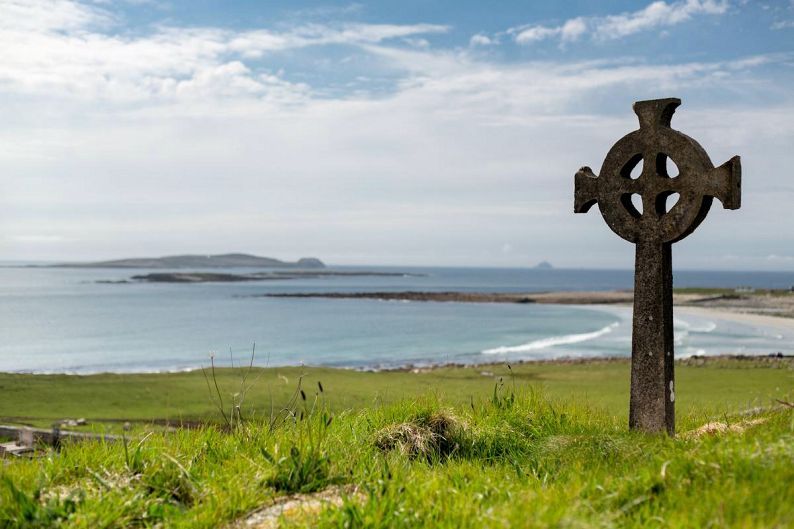
Celtic Languages, subfamily of the Indo-European family of languages. Geographically and historically, this subfamily is divided into a Continental group (now extinct) and an Insular group. On linguistic grounds the Insular languages fall into two groups: the Brythonic (or British), including Breton, Cornish, and Welsh; and the Goidelic (or Gaelic), including Irish, Scottish Gaelic (or Erse), and Manx. Until the 5th century, Continental Celtic languages, among them, Gaulish, were spoken throughout western Europe, but little information survives about them. Only the Brythonic and Goidelic groups survive, limited to the British Isles, Brittany, and some North and South American communities.
The characteristic of Celtic languages that most conspicuously distinguishes them from other Indo-European linguistic groups is their loss of the original Indo-European sound p. Thus, a Latin, Greek, and Sanskrit word containing an initial or medial p will appear in the Celtic language family without it (for example, Latin porcus, Goidelic orc). The Goidelic and Brythonic groups of Celtic languages differ in that Goidelic preserves the velar element of the Indo-European labiovelar qu sound (later written c), whereas Brythonic renders this sound as p. Thus Irish cuig or coo-ig (or cuig), “five” corresponds to Welsh pump.
The rules of pronunciation in all the Celtic languages are extremely complicated; the spelling generally does not correspond to the pronunciation, and initial consonants change according to the final sound of the preceding word. For example, in Irish, fuil is “blood,” but “our blood” is ar bhfuil. In Welsh tad (“a father”) becomes fy nhad for “my father,” ei thad for “her father,” and i dad for “his father.”
All modern Celtic languages use the Roman alphabet. They have only two genders, feminine and masculine; adjectives usually follow nouns. Like some non-Indo-European languages they use verbal nouns instead of present participles, always begin sentences with the verb, and express agency by means of the impersonal passive.
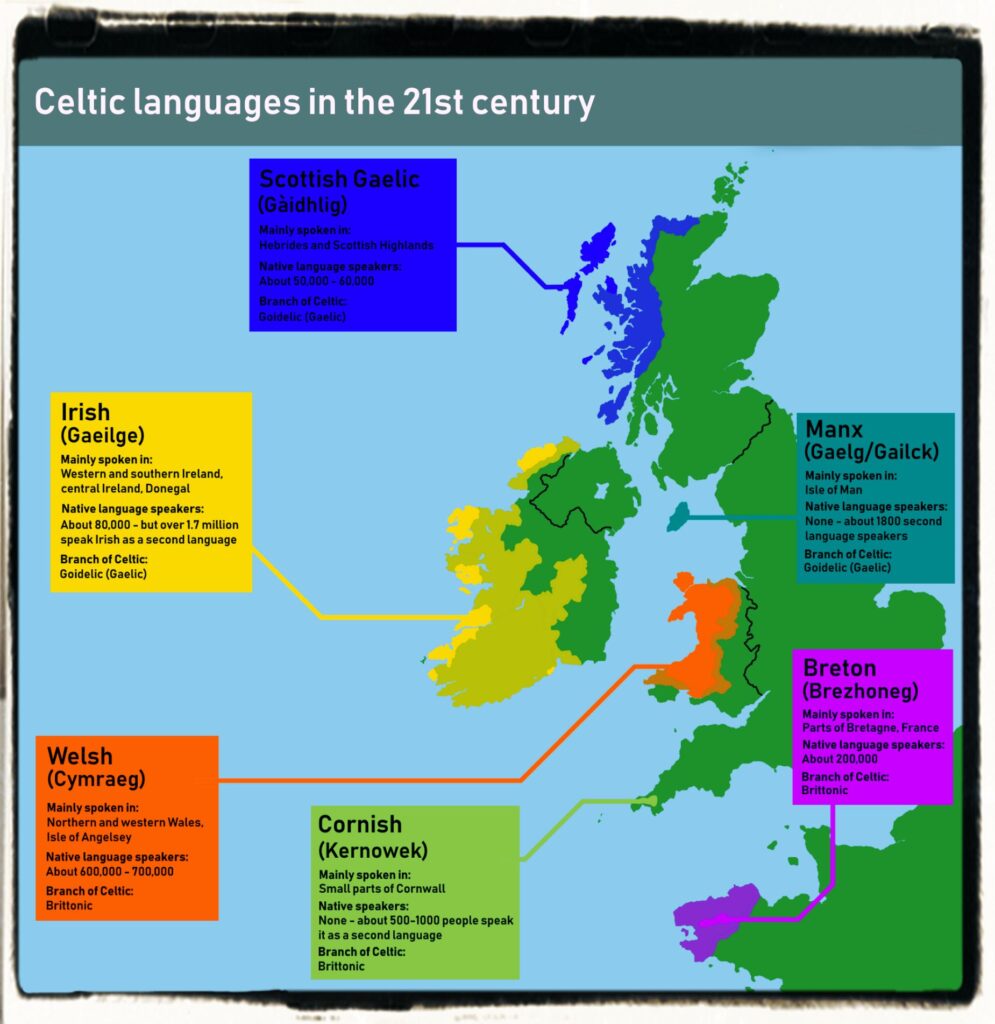
Breton
The Breton language is spoken today in various dialects in Brittany; most Breton speakers also speak French. Developed between the 4th and 6th centuries by Welsh and Cornish exiles fleeing invaders, it differs from the Welsh and Cornish of their homelands in its use of nasals and loanwords from the French.
Cornish
Once the language of Cornwall, Cornish has been extinct since the late 18th century, despite recent efforts to revive it. It survives only in a few proper names and certain words in the English dialect spoken in Cornwall.
Welsh
Welsh, called Cymraeg or Cymric (from Cymru, “Wales”) by its speakers, is the native language of Wales and the most flourishing of the Celtic languages. It is spoken in Wales (where the majority of its users also speak English) and in some communities in the United States and Argentina. Organizations such as the Society for the Welsh Language have saved the language from dying out and are working to assure its official status along with English. Several schools in Wales now use Welsh as the medium of instruction, and television and radio broadcasts are made in the language.
Like Breton, Welsh has discarded case endings for nouns; verbs, however, are elaborately inflected. The alternation of consonants, called mutation, plays a role, as in all Celtic languages. Welsh spelling is phonemic, representing unambiguously the pertinent sounds. In most cases Welsh speakers will know how to pronounce a word they have never seen before. The letter w can represent either a consonant or a vowel, however, and y stands for two vowel sounds. The consonant f has the sound of English v; ff of f; dd of th, as in then; and th of th, as in thin. Popular attempts to describe pronunciation of double l (ll) all fail. It is a voiceless lateral fricative, and facile comparison to English thl is invalid. Welsh words are accented on the next to last syllable and have a characteristic intonation.
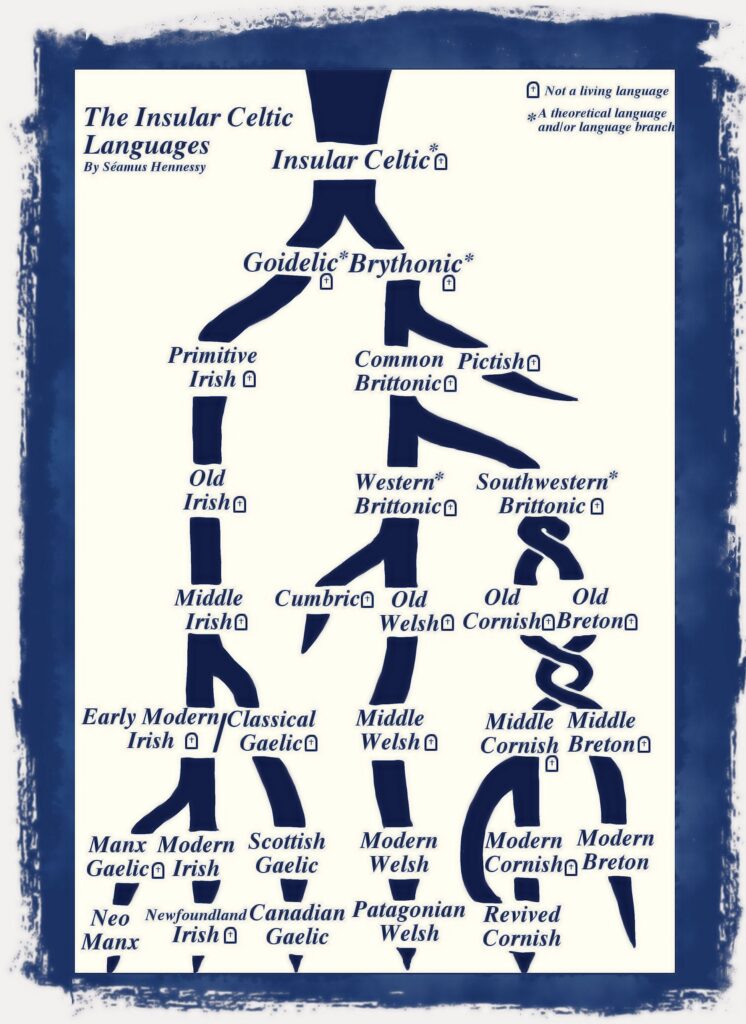
Scholars recognize three periods of Welsh: Old (800-1100), Middle (1100-1500), and Modern (from 1500). Old Welsh survives only in isolated words and names, plus a few lines of verse. Welsh has borrowed words throughout all these periods from Latin, Anglo-Saxon, Norman French, and extensively from English, but it still has a large native vocabulary of Celtic origin. Forty dialects have been identified in Wales. Standard Welsh has both a Northern and Southern variety.
Irish
Irish, or Irish Gaelic, is the oldest of the Goidelic group of Celtic languages. Ancient written examples exist in the ogham inscriptions, on about 370 gravestones scattered through southwestern Ireland and Wales. Dating from the 5th to the 8th century, the inscriptions consist almost entirely of proper names. Irish can be grouped into four periods: Old (circa 800-1000), Early or Early Middle (1200-1500), Middle (1200-1500), and Modern (from 1500).
Originally a highly inflected language, Irish retains essentially two noun cases, nominative and genitive, with the dative surviving in the singular of feminine nouns; the language has only two verb tenses in the indicative mood. It is chiefly spoken in the western and southwestern parts of the Republic of Ireland, where it is an official language, and to some extent in Northern Ireland. In the past century, the number of Irish-speaking persons has declined from 50 percent of the population of Ireland to less than 20 percent.
Scottish Gaelic
A form of Gaelic was brought to Scotland by Irish invaders about the 5th century, where it replaced an older Brythonic language. By the 15th century, with the accretion of Norse and English loanwords, the Scottish branch differed significantly enough from the Irish to warrant definition as a separate language.
The alphabet of Irish and Scottish Gaelic is identical, consisting of 18 letters. Scottish Gaelic employs four cases of nouns: nominative, genitive, dative, and vocative. Like Irish, the accent is on the initial syllable.
Scottish Gaelic exists in two main dialects, Northern and Southern, roughly geographically determined by a line up the Firth of Lorne to the town of Ballachulish and then across to the Grampian Mountains, which it follows. The Southern dialect is more akin to Irish than is the Northern, and is more inflected. The main difference is the change of the é sound, which is eu in Northern dialect and ia in Southern. Thus, the word for “grass” is pronounced feur in Northern and fiar in Southern. Scottish Gaelic also has a few thousand speakers in Nova Scotia.
Manx
The language of the Isle of Man is classed as a dialect of Scottish Gaelic, with strong Norse influence. It began to decline in the 19th century, and in the early 20th century it became virtually extinct. The first written records are of the 17th century, and Manx literature, apart from ballads and carols, is negligible.
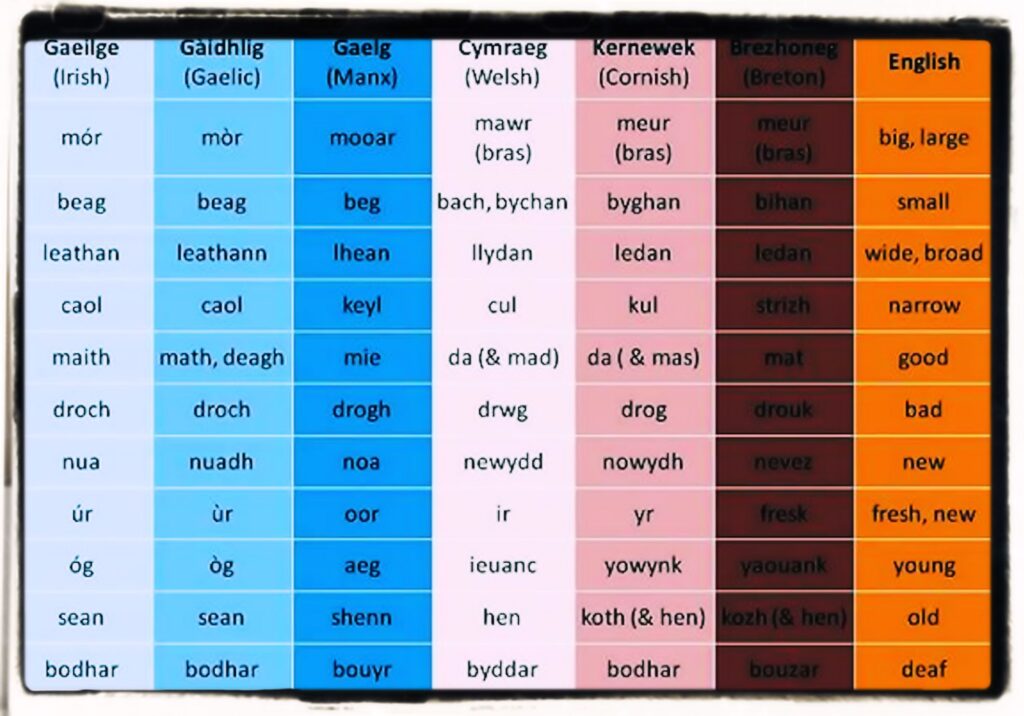
Gaelic vs Celtic
The terms Celtic and Gaelic cause a lot of confusion among many due to how similar they are, and the reason for this similarity is that these two terms are interrelated to each other. The Gaelic language/culture comes under the Celtic branch of languages/groups.
The Celtic culture originated from central Europe, and the group of tribes that come under this culture were called “The Celts”. There were many languages, religions, and tribes that came under this collective group. Traces of the culture can still be found in parts of Europe.
The Gaelic language is one of the few languages that come under the Celtic group of languages. It evidently originated from Scotland and parts of Ireland. The Scottish Gaelic language was the primary language that was spoken in Scotland and few areas/islands surrounding it.
The difference between Gaelic and Celtic is that Gaelic is a language/tribe that originated in Scotland and belonged to the group of Celtic cultures. The Celtic culture encompasses many different traditions and religions and cannot be categorized under one single subculture.
The Celtic culture began to rise in the year 1200 B.C. and first spread around parts of western Europe. The Gaelic Culture/language originated from Ireland and was introduced in Scotland in the 4th century.
The Celtic cultures and languages can be found to be practised in places like , the Isle of Man, Scotland, Ireland, Cornwall. The Scottish Gaelic language is commonly found to be spoken by the people living along the northwest coast of Scotland.
To find out more you can also read:
English and Welsh by J. R. R. Tolkien
The history of the Celtic language by Maclean, Lachlan, 1798-1848
Celtic Literatures in the Twentieth Century (PDF)
The Decline of the Celtic Languages



